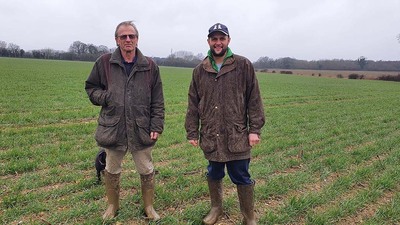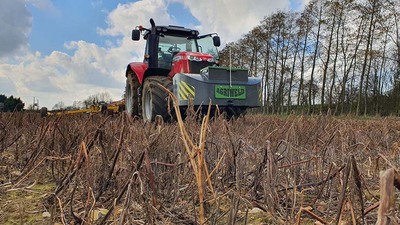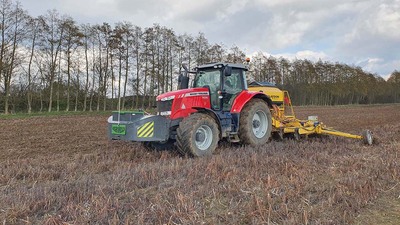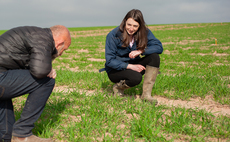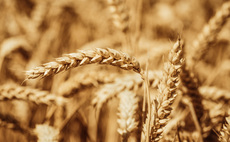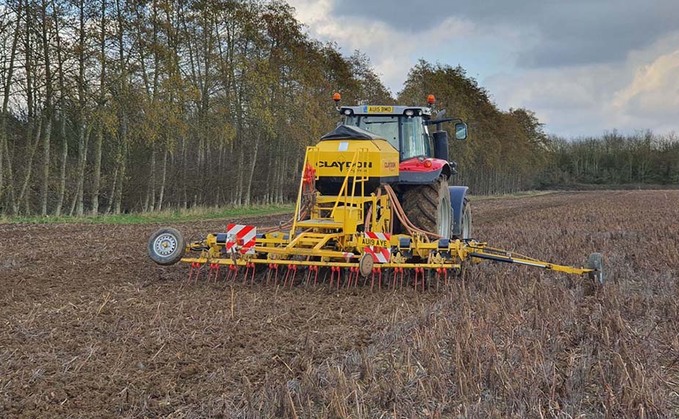
A switch to strip seeding has meant much more than a change of drilling system for one Norfolk farm business. Arable Farming finds out more.
The savings made on establishment costs as a result of a switch to strip tillage paved the way for the purchase of a neighbouring farm for Norfolk farmer David Cooper and ultimately a massive change in the scale of his farming business.
Mr Cooper says: Had we not moved away from using the traditional plough, power harrow and drill approach to establishing crops in favour of direct strip seeding, we definitely would not be in the position that we are today.
The Claydon Opti-Till System has reduced our costs by at least 40 per acre and without it the margins would not have been there to purchase a neighbouring farm which came up for sale in 2016. That made a massive difference to the business.
Mr Coopers strip-till journey started with a prototype three-metre SR drill, an evolution of the original V-Drill which Jeff Claydon designed in 2002, shown on the companys stand at LAMMA in January 2006. Two days later, after visiting the Claydon familys arable farm and factory in Suffolk, they purchased the drill which had been on display and drilled their first crop with it a month later.
Ever since then the Opti-Tillcrop establishment system has been a cornerstone of the farming and agricultural contracting business which D., B. & A. Cooper operate from Rickwood Farm, Hockering.
Since Mr Cooper began farming in 1977, initially with a small pig unit on a 0.8-hectare greenfield site, the business has expanded progressively. By 1990 he was farming 53ha of his own land and the pig herd had grown to 70 sows, but that year Mr Cooper was asked to look after another 53ha on a neighbouring farm. What was initially to be a one-year contract has continued ever since.
Mr Cooper took on a further 81ha in 1990, so it was a time of massive change for the business. Working alongside son Andrew, he now farms 242ha, including 121ha which is owned and another 121ha which is contract farmed, together with an expanding contracting business.
Grain prices were terrible at the time we bought the SR, Mr Cooper recalls.
By then we had already moved away from a plough, power harrow and drill system which was once used to establish crops, switching to discing and drilling simply to cut costs.
"There was a lot of interest in direct drilling at that time for the same reason and while it can work in ideal conditions, we felt its performance would be too variable and pose too much of risk over the longer term.
We saw strip seeding as being the next step on from what we were doing and liked the concept behind the Claydon SR, which used a leading tine to remove compaction, create a drainage channel and shatter the soil."
At the time, most farmers in this area were still ploughing, then using a power harrow-drill combination, which was the traditional approach in Norfolk. Many were preparing land way ahead of drilling, so they were in trouble if the weather turned wet. The other drawback was that the system produced cobbly seedbeds in dry conditions, providing ideal conditions for slugs, which could be a significant problem.
After more than five years operating the SR with success, the drill was changed in September 2011 to cope with an additional 162ha which the business had taken on. But Mr Cooper remained loyal to the Claydon system, buying one of the then-new 4m Claydon Hybrid models.
Our land had improved dramatically since we stopped ploughing in 2004, but despite the obvious benefits many people were still reluctant to change," he says
"I think part of the reason was that they were used to seeing brown soil and could not quite get their heads around the idea of stubble showing through in fields which had been drilled with the next crop.
With contracting work, we now drill more than 1,000 acres a year. The only area not drilled directly with the Claydon is where, one year in seven, muck from Andrews 12,000-bird outdoor turkey unit is spread and ploughed, which is when we go in with the Hybrid."
The land which the Coopers farm is mostly medium loam, but includes everything from sand to heavy clay.
Cropping currently includes six-row winter barley, winter wheat, oilseed rape, naked oats, beans and some spring barley.
We use our Hybrid to drill all sorts of crops, from cereals to kale, directly into grass stubbles with the Claydon LD Low Disturbance points. It also establishes cover crops of phacelia, oil radish and berseem clover or vetch, which are drilled in August at 5kg/ha, left to grow over winter, then sprayed off in January or February ahead of drilling spring crops, says Mr Cooper.
As an experiment for one of our customers, we even drilled beans 150mm deep with the narrow three-inch points on the seeding tines, then drilled the field again with wheat using the standard seven-inch A-shares. The theory is the beans will fix nitrogen which can then be utilised by the wheat, so it will be interesting to see how that works out.
Strip tillage has made heavy land much easier to work, says Mr Cooper, with soil structure and worm counts improving greatly over time.
I would say the heavy land has become as easy to work as the light land," he adds.
"The benefits of using this approach are also noticeable on the lighter soils, which dry out very quickly if inverted. It does an excellent job of retaining moisture and because much of the land is left uncultivated, the stubble and root structures are retained. This helps to prevent soil blows which are common in Norfolk where light soils are overworked.
One of the key benefits is that it allows us to farm more land with less labour and machinery. Recently, we cut costs even more by reducing the number of tractors from three to two. The existing 135hp and 160hp models were replaced by a new 170hp Valtra, which is fitted with a front loader to avoid the additional expense of operating a telescopic handler.
We bale the barley straw and some of the wheat, but the rest is chopped by our 7.7m Claas Tucano 570 combine. The stubble is normally 100-150mm high and immediately after harvest we go in with our 7.5m Straw Harrow just to move a shallow layer of soil and encourage any weeds or volunteers to chit.
The Hybrid will operate without any problems and we have even used it to drill directly into knee-high volunteer rape. It works well behind our 252hp MF 7626, which is much more powerful than Claydon suggests, but we are often called on to operate in difficult conditions where farms have been unable to establish crops with their own drill, so we would rather have power to spare than struggle. The normal operating speed is a comfortable 10kph and we use higher seed rates on our own land to encourage the crop to smother out any weeds.
Four years ago, our winter wheats yielded 11.4t/ha, but the current five-year average is just under 10t/ha, lower than it would normally be because of the very dry spring weather during the last two years. Winter barley yields eight to nine tonnes/ha, and the naked oats we grow on contract to GB Seeds normally average 6t/ha, but can produce up to 7t/ha, equivalent to about 9t/ha of conventional oats.
The same 24m tramlines are used all the time because we see no sense in ripping them up each year. The only reason for that would be to take out deep ruts, but our soils are now much more supportive.
"That also allows us to begin spraying and applying fertiliser with our Sands 2,000-litre self-propelled well before other farms where conventional cultivations are used.
While some farm businesses remain in a cycle of ploughing and pulling up land just because that is the way it has always been done, that mindset is beginning to change, suggests Mr Cooper, with interest growing in reduced tillage approaches.
Many are considering it purely for the potential cost savings, others for the benefits in terms of improvements to soil structure and health," he says.
"Reducing labour and machinery, improving timeliness, reducing weather-related risks and cutting down on the amount of diesel used are other priorities which I have heard mentioned.
It is important to understand that the full benefits will not be apparent in the first year. You will see cost savings, certainly, but it is really in the second and third years they really start to become obvious. It takes a while for soils to change, but there is a continual improvement."
